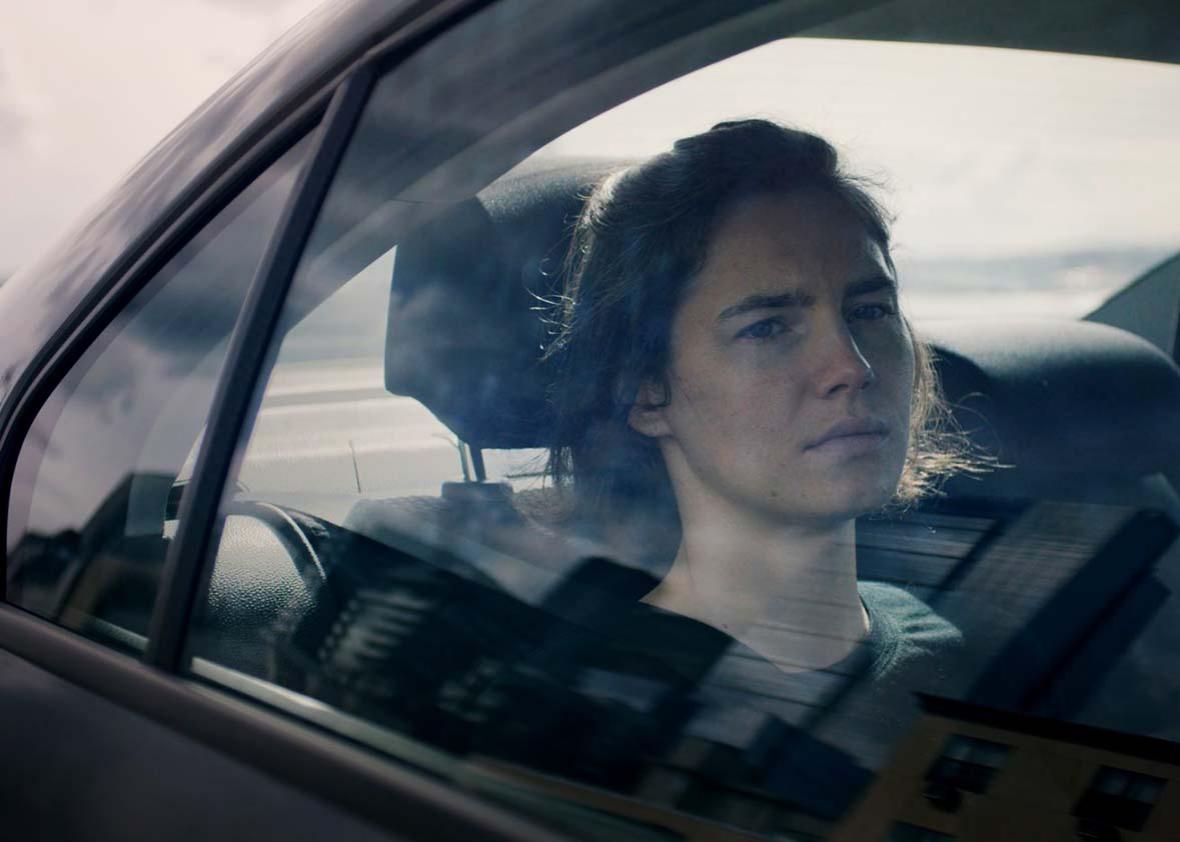The filmmakers Rod Blackhurst and Brian McGinn began working on Amanda Knox, their documentary about the 20-year-old American convicted of a sordid murder in Italy, in 2011, as Knox and her alleged co-conspirator, Raffaele Sollecito, were first up for appeal. It arrives in the midst of a craze for true crime that includes Serial, Making a Murderer, The People v. O.J. Simpson, O.J. Simpson: Made In America, and a host of JonBenét Ramsey reappraisals. But what Amanda Knox, a thoughtful but perhaps overly simplistic examination of the scandal, demonstrates is that there has always been a frenzy for true-crime stories. This frenzy is what made “Foxy Knoxy,” as she was dubbed by the tabloids, a front-page story across the globe. What is currently in vogue is not true crime, which never goes out of vogue, but a more sophisticated way of presenting true crime, a deconstruction not simply of a murder, but of a crime’s entire milieu. By asking questions beyond “whodunit?” these true crime tales climb out of the sordid gutter, into the realm of the highbrow, where they can be appreciated by even the snobs among us.
Amanda Knox has four protagonists: Knox, Sollecito, who at the time of the murder had been her boyfriend for five days, Giuliano Mignini, the chief prosecutor of the case, and Nick Pisa, who covered the story for the British Daily Mail. All four fully participated in the movie, and Knox and Sollecito’s willingness to do so is a tipoff to the documentary’s belief about what happened the night the 22-year-old Brit Meredith Kercher was murdered. In the runup to the documentary’s release, Netflix, which is releasing the film Friday, ran dueling trailers, in one of which Knox is painted as innocent, in the other guilty. But despite this sage bit of advertising, the film is not so torn. It convincingly makes the case that Knox and Sollecito were arrested, imprisoned, and convicted because of the sexist and wrongheaded instincts of a prosecutor and the gross appetites of a ravenous press. It is a dissection of a miscarriage of justice, not a murder.
This is the first film Knox has agreed to participate in, and she carries herself with grim dignity. Gone is her habit, on display even in court, of smiling inappropriately. Now we see a circumspect, thoughtful young woman who seems to have been deeply traumatized by her experiences. The documentary follows a straightforward chronology that hews to her and Sollecito’s version of events. So much of what was held against Knox at the time—her “inappropriate” reaction to Kercher’s death, which allegedly involved cartwheels—makes it into the film only as asides reflecting authority figures’ poor judgment: they should have known better than to put undue stock in such circumstantial evidence. Late in the film, when it gets to thoroughly debunking the DNA that is the only real evidence that ties Knox and Sollecito to the murder, Knox says, of the authorities, “You’re looking in my eyes” when the evidence is over there. “These are just my eyes.” This is the position of the documentary-makers as well: There is evidence and there is hocus pocus, and it is only belief in the latter that convicted Amanda Knox.
The believers, as presented by the film, are Mignini and Pisa, the villains of the piece, a satisfying oversimplification. Pisa is the lightweight, a stereotypical Fleet Street hack who thrilled to get front pages on the Knox story, even if those front pages included outlandish accusations that the murder had been some kind of voodoo ritual. Pisa accepts no responsibility for the salacious coverage, wondering: What was he supposed to do, double-check that the information was true? That’s how you get scooped. Pisa is not at all sympathetic, and yet he was not the only journalist covering the case and is surely correct that another journalist and another paper would have scooped him on every sordid detail. He is a symptom, not the disease.
Mignini is a more complex figure, the Javert to Knox’s Jean Valjean (which makes Pisa Monsieur Thénardier). He is a devout Catholic, a father of four girls, a lover of Sherlock Holmes, a showboat—he smokes a flashy pipe—and a man who believes he is devoted to the facts. And yet his every action is based on supposition and instinct. He begins to suspect Amanda when she breaks down at the crime scene and bangs her hands on her ears: She must have been trying to block out the memory of Kercher’s screams, Mignini assumes. The corpse is covered with a blanket: Mignini believes no man would ever do that. He mentions Knox’s problems with authority—maybe it’s a Seattle thing, he speculates, before pulling back because he “chooses to stick to the facts”—and her inability to handle questions, referring to an interrogation in which Italian police smacked Knox upside the head and repeated over and over that she had not been at Sollecito’s house the night of the murder. When another suspect, Rudy Guede, is discovered—he is later convicted in a separate trial from Knox and Sollecito—Mignini ignores Guede’s contention that Knox was not at the house, and pooh-poohs the possibility, supported by DNA, that Guede acted alone.
For such a sedate film, Amanda Knox achieves a surprisingly moving climax, when Knox learns, from her home in Seattle, that the Italian Supreme Court has vacated her conviction. Laughing, crying, she calls Sollecito, and in Italian says to him, “We’re free!” It’s an uplifting moment, a bit of craftsmanship that obscures the movie’s overly simple conclusion—that what went wrong here was simply an unfettered press and a prideful prosecutor. These thing surely went wrong, but as we watch a documentary about Amanda Knox, we and the film might consider our own insatiable appetites too.
